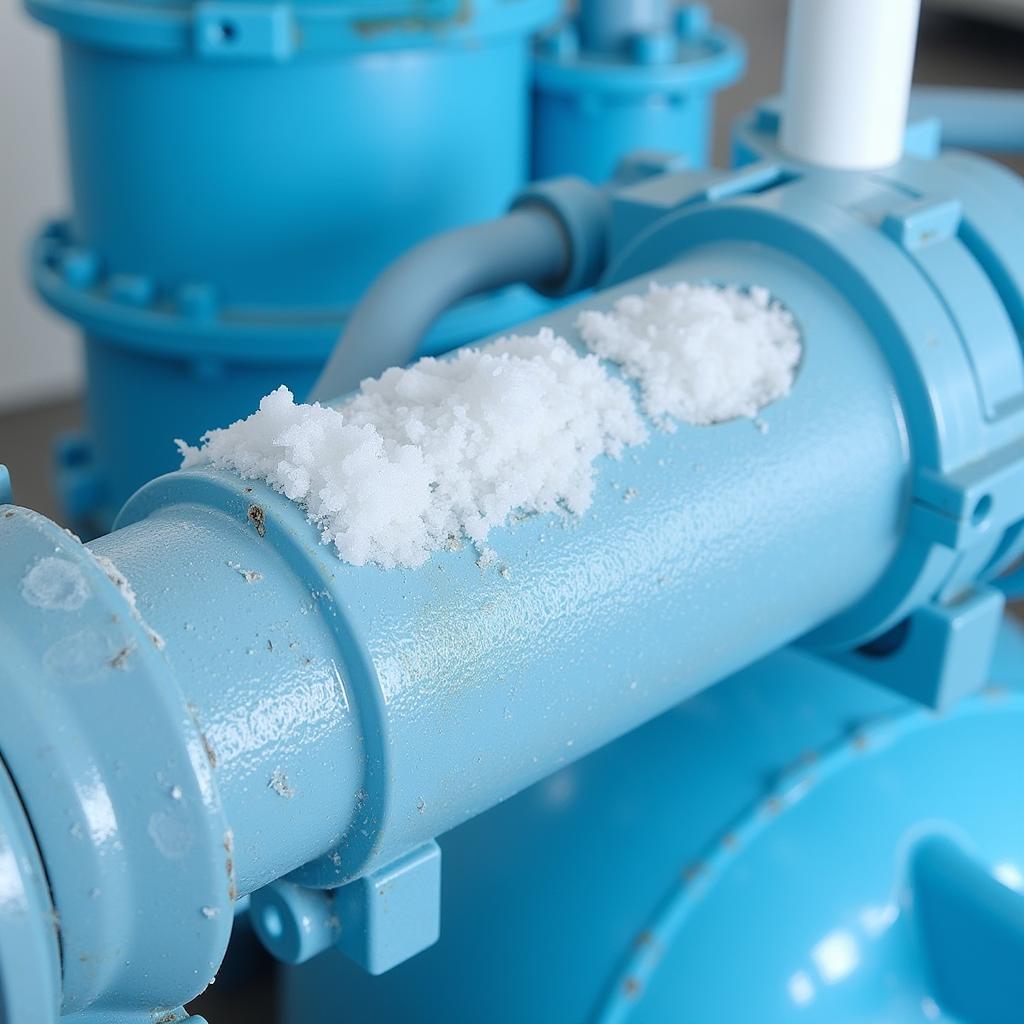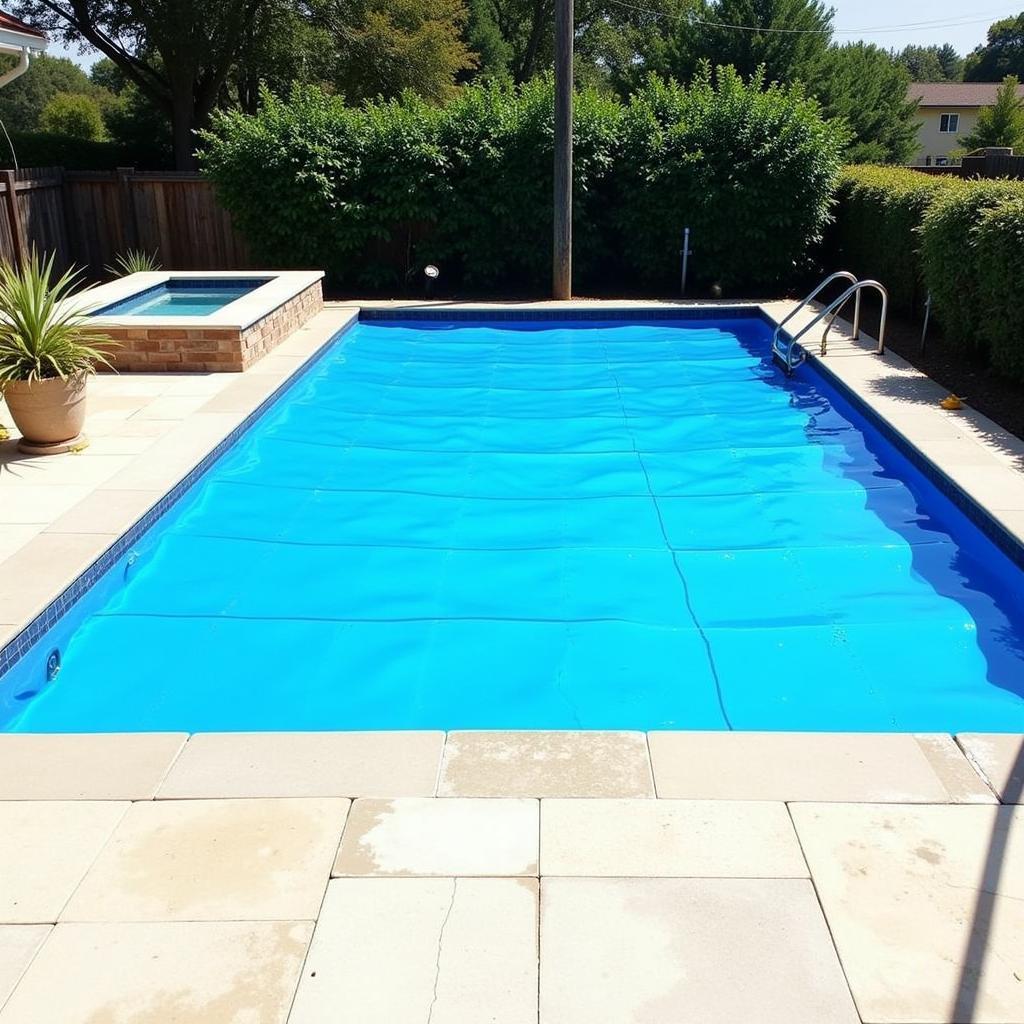Maintaining the ideal free chlorine levels in your salt water pool is crucial for a safe and enjoyable swimming experience. Low free chlorine can lead to cloudy water, algae growth, and even harmful bacteria. While salt water pools generally require less chlorine than traditional pools, several factors can contribute to low chlorine levels. This guide will help you troubleshoot common causes of low free chlorine in salt water pools and provide effective solutions to keep your water sparkling clean.
Understanding Free Chlorine in Salt Water Pools
Before diving into troubleshooting, let’s clarify the role of free chlorine in a salt water pool system. Unlike traditional pools that use chlorine tablets or granules, salt water pools utilize a salt chlorine generator. This device converts dissolved salt into chlorine through electrolysis, providing a continuous supply of sanitizer.
Free Chlorine: This is the active form of chlorine that effectively eliminates bacteria and other contaminants.
Total Chlorine: This refers to the total amount of chlorine in your pool, including both free chlorine and combined chlorine (chlorine that has already reacted with contaminants).
Ideally, you want to maintain a free chlorine level between 1.0 and 3.0 parts per million (ppm) in a salt water pool.
Common Causes of Salt Water Pool Low Free Chlorine and How to Fix Them
1. Insufficient Salt Level:
The most common reason for low free chlorine is simply not having enough salt in your pool. Your salt chlorine generator needs a specific salt concentration to function correctly.
Solution:
- Test Salt Levels: Use a reliable salt test kit to check your pool water.
- Adjust Salt Levels: Refer to your generator’s manual for the recommended salt level, which usually falls between 2,700 and 3,400 ppm. Add pool salt as needed, ensuring it dissolves completely.
2. Low Chlorine Generator Output:
Over time, your salt chlorine generator’s output may decrease due to wear and tear or scaling buildup on the cell.
Solution:
- Check the Cell: Inspect the salt cell for calcium deposits or debris. Clean it according to the manufacturer’s instructions using a mild acid solution.
- Adjust Output Level: Increase the chlorine output setting on your generator.
- Consider Cell Replacement: If the cell is old or damaged, consider replacing it for optimal performance.
 Salt Chlorine Generator Cell with Calcium Deposits
Salt Chlorine Generator Cell with Calcium Deposits
3. High Chlorine Demand (Chlorine Lock):
Heavy bather load, rain, debris, and even sunlight can increase chlorine demand, depleting free chlorine levels quickly. This situation, often called “chlorine lock,” occurs when chlorine binds to contaminants but cannot effectively sanitize the water.
Solution:
- Shock Treatment: Use a chlorine shock product to break down contaminants and raise free chlorine levels quickly.
- Adjust pH and Alkalinity: Ensure your pool water’s pH (7.2-7.6) and alkalinity (80-120 ppm) are within the ideal range, as imbalanced levels can reduce chlorine effectiveness.
4. Environmental Factors:
Sunlight is a major factor in chlorine loss. UV rays from the sun can degrade free chlorine rapidly.
Solution:
- Use a Pool Cover: Covering your pool when not in use can significantly reduce chlorine loss due to sunlight.
- Add Cyanuric Acid (Stabilizer): Cyanuric acid acts as a sunscreen for your pool, protecting chlorine from UV degradation. Maintain a cyanuric acid level of 30-50 ppm.
 Swimming Pool Covered to Minimize Chlorine Loss from Sunlight
Swimming Pool Covered to Minimize Chlorine Loss from Sunlight
5. Inadequate Water Circulation:
Poor water circulation can create dead spots in your pool where chlorine is less effective.
Solution:
- Run Your Pump Sufficiently: Ensure your pool pump and filter system are running for an adequate amount of time each day to circulate water properly.
- Check for Blockages: Inspect and clean your pool filter regularly to remove any debris that may be hindering water flow.
6. Water Testing Errors:
Inaccurate water testing can lead to improper adjustments and persistent low chlorine issues.
Solution:
- Use Reliable Test Kits: Invest in high-quality test strips or a liquid test kit.
- Test Regularly: Test your pool water at least twice a week, and more frequently during periods of high usage or after heavy rain.
Quoting the Experts:
“Many pool owners underestimate the impact of sunlight on chlorine levels. A good quality pool cover can make a world of difference.” – John Miller, Certified Pool Operator
“Regular maintenance and testing are key to preventing low chlorine issues. It’s always easier to maintain proper levels than to correct a problem after it arises.” – Sarah Thompson, Aquatic Facility Manager
Conclusion
Maintaining the right free chlorine level in your salt water pool is essential for clean, clear, and healthy water. By understanding the common causes of low chlorine and implementing the solutions outlined above, you can ensure a safe and enjoyable swimming experience for you and your family.